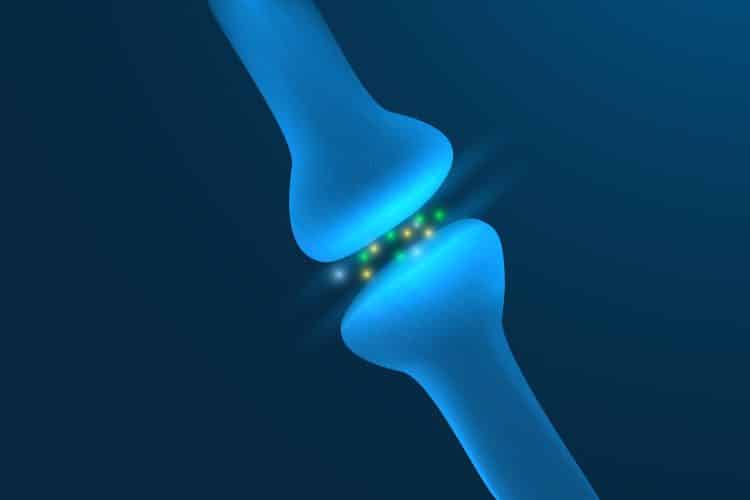With each passing day, we continue to discover the amazing benefits of intermittent fasting on the human body. While the world is going ga-ga over its amazing weight management benefits, scientists are busy exploring its impacts on other body functions.
The recent focus has been on exploring the impact of the endocannabinoid system, or ECS. The ECS, or endocannabinoid system, is responsible for hormone regulation and metabolism. It has a direct role in managing weight and how we intake food.
In this guide, we will determine how intermittent fasting can control endocannabinoids.
What is an Endocannabinoid System?
First discovered in 1990, the endocannabinoid system (ECS) is a complex biological system in humans and other animals. It comprises a network of receptors, endocannabinoids (chemical compounds similar to those found in the cannabis plant), and enzymes that work together to regulate various physiological processes, including appetite, pain sensation, mood, and immune function.
The ECS plays a crucial role in maintaining homeostasis, which is the body’s ability to maintain a stable internal environment despite external changes. It helps regulate a wide range of physiological functions and maintain balance within the body.
While much is still unknown about this complex system, scientists believe it may hold promise for developing new therapies for a range of conditions, including chronic pain, anxiety, and inflammation. [1]
Level Up Your Fitness: Join our 💪 strong community in Fitness Volt Newsletter. Get daily inspiration, expert-backed workouts, nutrition tips, the latest in strength sports, and the support you need to reach your goals. Subscribe for free!
How Does ECS Work?
ECS is made up of endocannabinoids, receptors, and enzymes. To understand how ECS works, it’s important to break down the functions of these three components.
Endocannabinoids
Endocannabinoids, or endogenous cannabinoids, are the human-made versions of cannabinoids produced by plants.
Just like the plant-based cannabinoids, they feature THC and CBD. Anandamide and 2-arachidonoylglycerol (2-AG) are two commonly found endocannabinoids. The role of endocannabinoids here is to bind and trigger the cannabinoid receptors in the body.
This way, endocannabinoids significantly impact crucial body functions like inflammation, metabolism, and pain.
Endocannabinoid Receptors
The second component of ECS is endocannabinoid receptors, which are special proteins commonly found in multiple tissues and are responsible for binding the endocannabinoids. These receptors support a wide range of physiological responses by supporting binding. CB1 and CB2 receptors are two common varieties of endocannabinoid receptors.
CB1 receptors are primarily seen in the brain and central nervous system and regulate appetite, mood, memory, pain perception, and motor control, among other functions. On the other hand, CB2 receptors are found in peripheral tissues and the immune system.
CB2 receptors are generally present in the immune system and peripheral tissues, like the spleen, tonsils, and bones. They are involved in modulating inflammation and immune function. These receptors control functions like metabolism, pain sensation, appetite, etc.
Enzymes
Enzymes are the last ECS components that handle endocannabinoids, breaking down when they finish their assigned functions. Two main enzymes are fatty acid amide hydrolase and monoacylglycerol acid lipase.
Fatty acid amide hydrolase handles the breakdown of AEA, while monoacylglycerol acid lipase breaks down 2-AG.
Role of ECS in Influencing Weight and Food Intake
The endocannabinoid system, or ECS, plays a significant role in regulating food intake and body weight. Endocannabinoids and their receptors are present in the central nervous system and various peripheral tissues and are mainly responsible for controlling energy expenditure and metabolism.
Endocannabinoids are known to alter the body’s glucose level and lipid metabolism. The direct impact of these activities is increased energy storage. Research has explored that ECS tends to be highly overactive in obese people and is often responsible for retaining the alleviated fat mass. [2]
It is responsible for maintaining energy homeostasis by balancing energy intake and expenditure. To maintain this balance, the ECS interacts with hormones and neural circuits. The ECS can modulate food intake by interacting with various brain regions involved in appetite regulation, such as the hypothalamus.
Endocannabinoids can stimulate the release of hunger-promoting hormones, such as ghrelin, and inhibit the release of satiety-promoting hormones, such as leptin. This way, ECS might lead to increased food intake, resulting in weight gain.
Level Up Your Fitness: Join our 💪 strong community in Fitness Volt Newsletter. Get daily inspiration, expert-backed workouts, nutrition tips, the latest in strength sports, and the support you need to reach your goals. Subscribe for free!
Additionally, ECS influences energy expenditure greatly as it impacts the activities of BAT or brown adipose tissue. BAT is responsible for controlling calorie burning.
With every endocannabinoid signaling action, there is a slight decrease in BAT activities, leading to a dip in energy expenditure. As energy consumption decreases, fat accumulation happens. [3]
Evidence proves that ECS can impact the homeostatic and hedonic elements of appetite and food intake. Endocannabinoid tone tends to influence feeding motivation in humans. [4]
It has been observed that when we are hungry, the body releases a high level of 2-AG and AEA in our body tissues. With this, we seek food that is delicious and high in calories.
ECS and endocannabinoids can lead to high body weight and fat percentage.
Intermittent Fasting: A Novel Weight Management Approach
Intermittent fasting is a scientifically proven approach to managing body weight. By controlled fasting and eating, intermittent fasting positively impacts hormones, body weight, metabolism, and other key functions.
There are several different methods of intermittent fasting, such as 16/8, Eat-Stop-Eat, the 5:2 diet, and alternate-day fasting. Regardless of the method you pick, intermittent fasting has been proven to reduce body weight and increase muscle mass in humans.
Can Intermittent Fasting Have Any Impact on ECS?
A handful of research outcomes establish a direct relationship between intermittent fasting and ECS. For instance:
Intermittent fasting can reduce CB1 receptor activity
Intermittent fasting has been shown to reduce the activity of CB1 receptors in various tissues, including the liver, adipose tissue, and brain. Even though this research has a limited scope, it has been observed that the endocannabinoid system tends to remain in control with limited food intake and energy balance.
Controlled and time-restricted eating tends to lower cannabinoid receptor 1 (CB(1)R) expression. The reduction in CB1 receptors plays a crucial role in reducing food intake. In fact, CB1 receptor antagonists like rimonabant are used for weight loss treatment in obese patients. The role of these antagonists is to control or reduce diet-induced weight gain.
Anticipations are there because intermittent fasting reduces inflammation and oxidative stress. [5]
As fasting reduces CB1 activities naturally, people can give it a try to maintain their ECS balance and ideal body weight.
Increased endocannabinoid levels
Intermittent fasting has been shown to increase the endocannabinoids 2-arachidonoylglycerol (2-AG) levels in various tissues.
2-arachidonoylglycerol is responsible for controlling food intake along with multiple physiological processes. High 2-arachidonoylglycerol means low food intake. When the body is on a prolonged fasting program, humans perform less breakdown of these compounds. Hence, the level of 2-arachidonoylglycerol increases. [6]
Frequently Asked Questions
Which are some common fasting methods?
Intermittent fasting can be done in multiple ways, including 16:8, 5/2, and Eat, Stop, Eat. Each method has a different approach to fasting. For instance, 16:8 involves eating all meals in an eight-hour window and fasting for 16 hours.
Which fasting method is useful for maintaining the ECS tone?
Individuals can pick any fasting method to maintain the ECS tone. All the fasting methods significantly impact our bodies and can help manage ideal ECS levels, provided you’re fasting correctly.
What is the relationship between ECS and obesity?
ECS impacts hunger, food cravings, and energy expenditure in humans and many animals. Imbalanced ECS is found to be responsible for frequent food cravings and induces overeating in humans. Both of these activities lead to weight gain. Hence, it’s important to maintain ECS levels if you want to maintain your body weight.
Wrap Up
A balanced ECS function is required to maintain balance in various physiological activities such as hunger, pain, inflammation, etc. A slight irregularity in the endocannabinoid system can promote higher food intake and increase body weight.
Intermittent fasting is a novel approach individuals can adopt to maintain the ideal ECS levels and their related processes.
Ensure you know the proper practices before starting intermittent fasting. There are certain dos and don’ts of intermittent fasting that you must adhere to experience the desired results.
References
- Russo, E. B. (2016, July 1). Clinical Endocannabinoid Deficiency Reconsidered: Current Research Supports the Theory in Migraine, Fibromyalgia, Irritable Bowel, and Other Treatment-Resistant Syndromes. PubMed Central (PMC).
- The role of the endocannabinoid system in the regulation of energy expenditure – PubMed. (2009, February 1). PubMed.
- Endocannabinoids and energy homeostasis: an update – PubMed. (2014, August 1). PubMed.
- The endocannabinoid system and appetite: relevance for food reward – PubMed. (2014, June 1). PubMed.
- The effect of leptin receptor deficiency and fasting on cannabinoid receptor 1 mRNA expression in the rat hypothalamus, brainstem and nodose ganglion – PubMed. (2009, October 2). PubMed.
- 2-Arachidonoylglycerol: A Signaling Lipid With Manifold Actions in the Brain – ScienceDirect.











